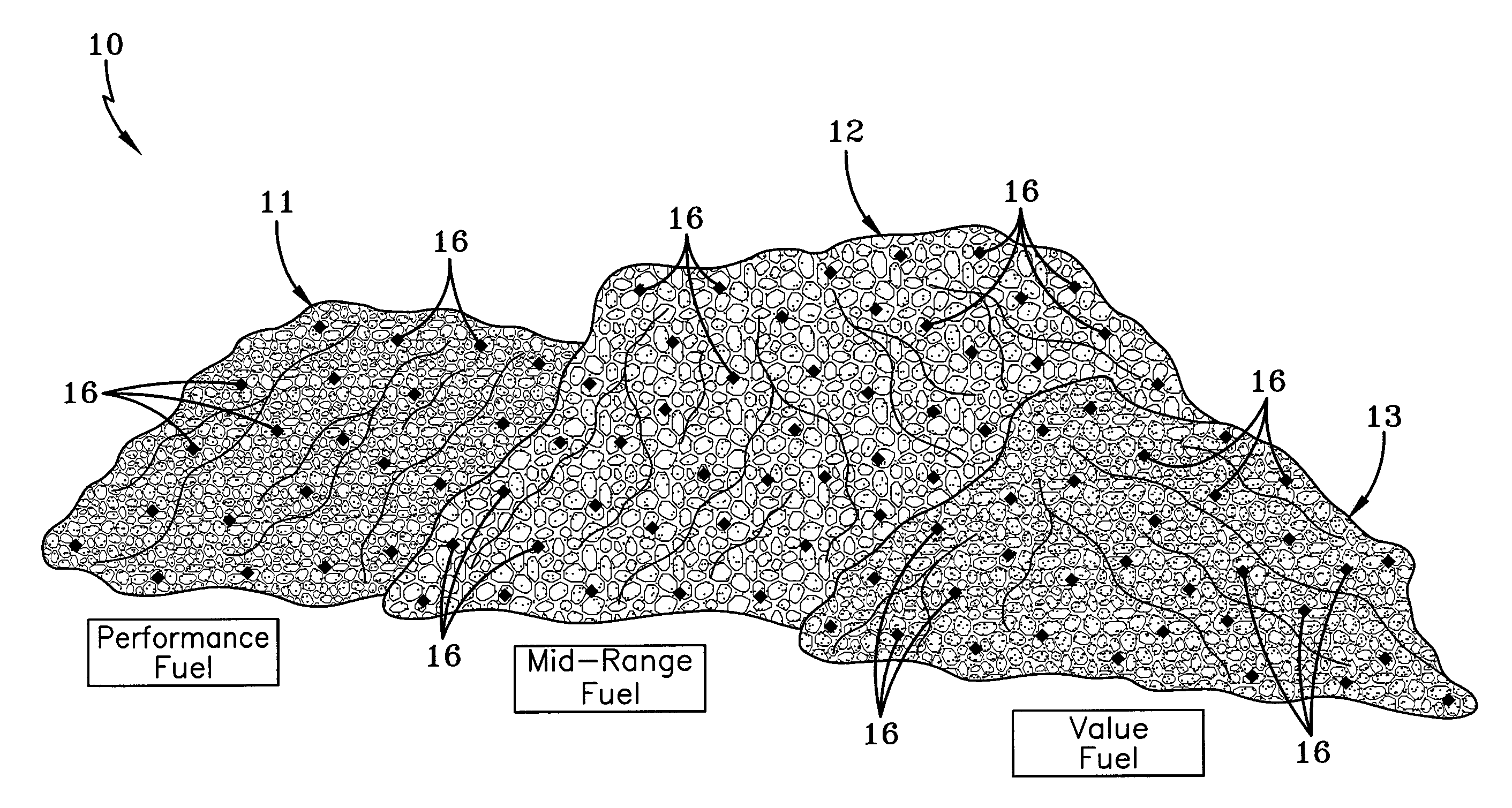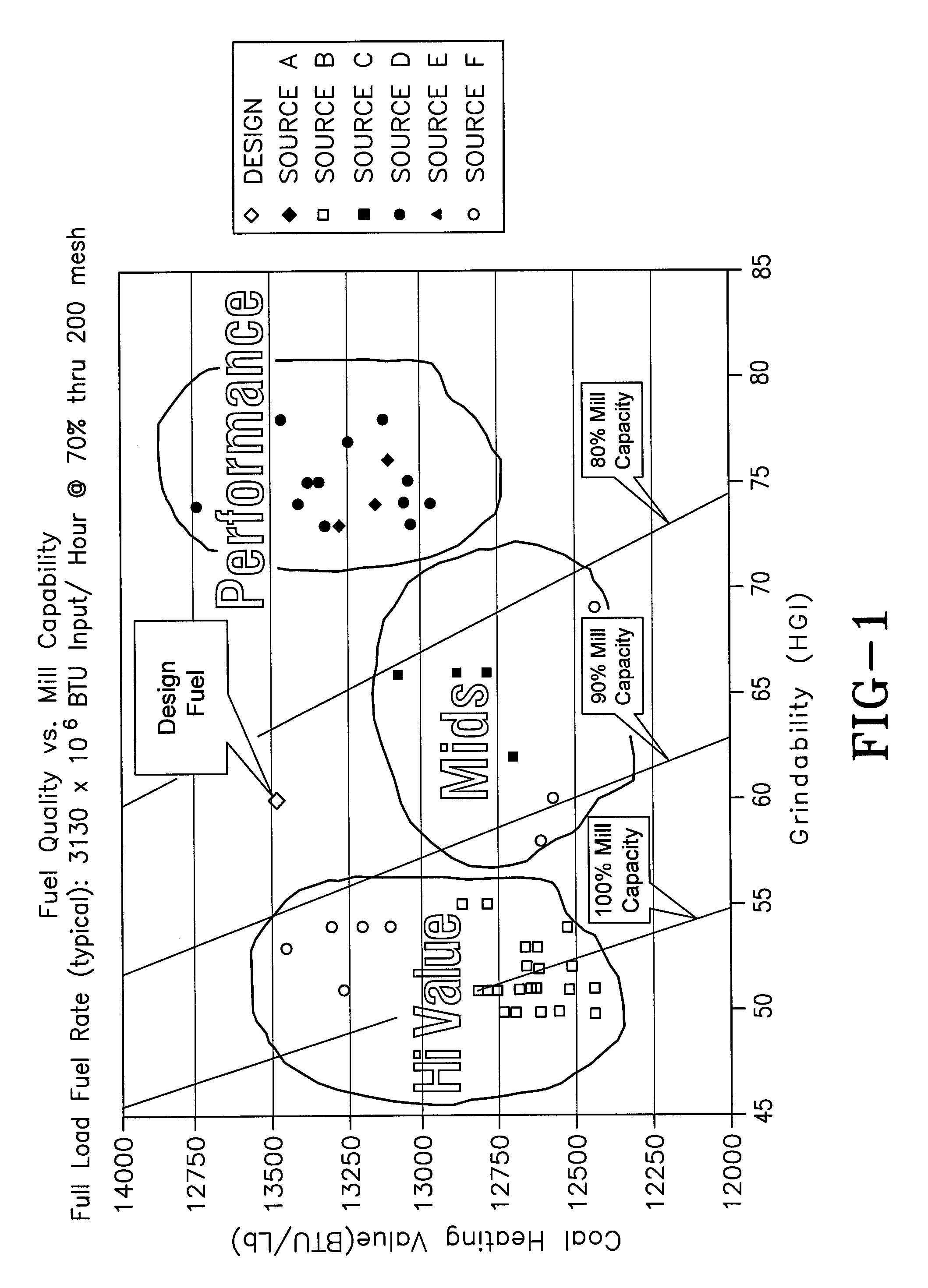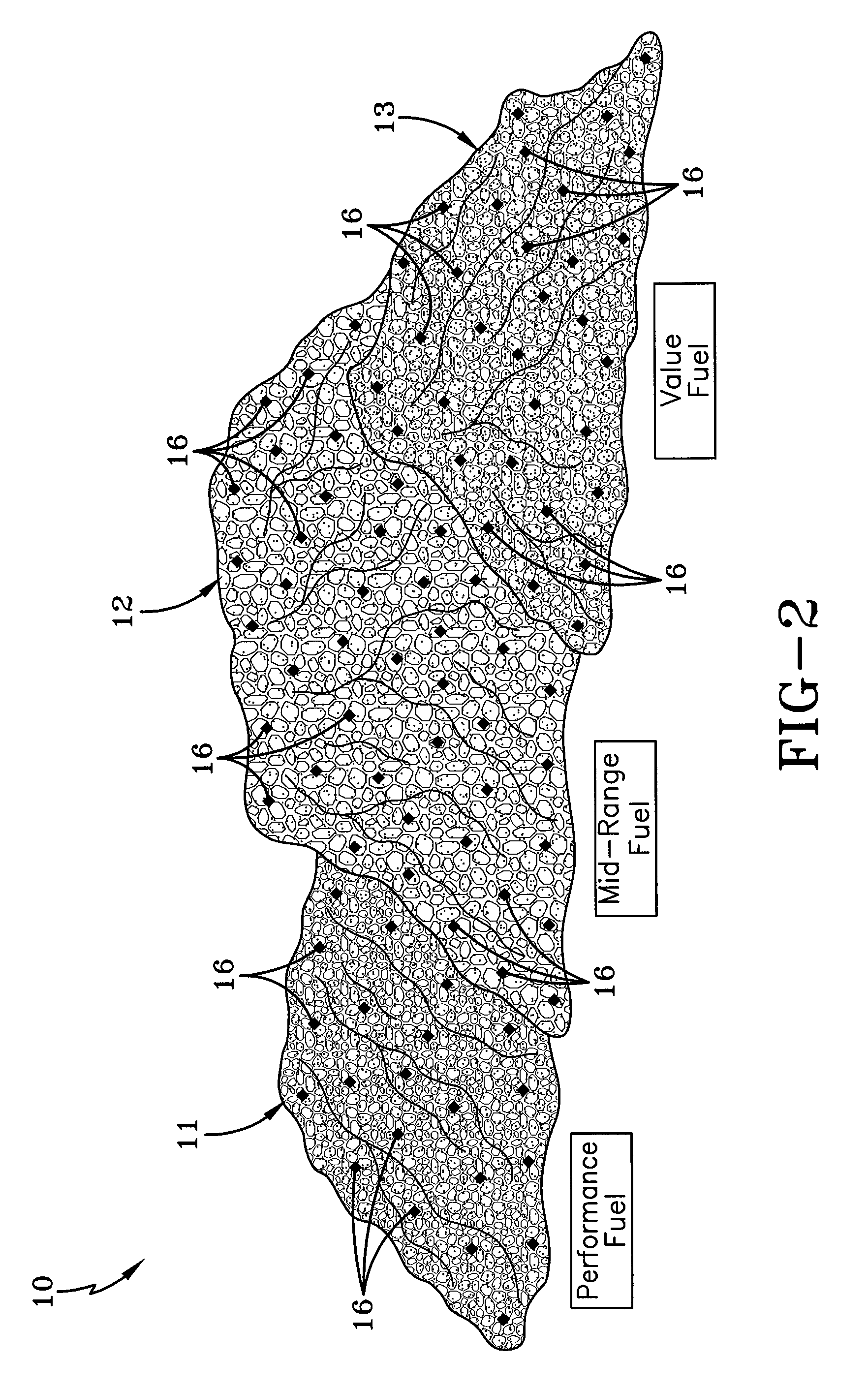Tracking and properties control system for bulk materials
a technology of properties control and bulk materials, applied in the field of bulk material handling, can solve the problems of inability to achieve the effect of a large number of similar coal lots having varying properties in most storage areas, unsubstantiated and outdated, and limited separation efforts in coal-yards
- Summary
- Abstract
- Description
- Claims
- Application Information
AI Technical Summary
Benefits of technology
Problems solved by technology
Method used
Image
Examples
Embodiment Construction
[0033]The invention provides systems for tracking bulk materials and methods for constructing and using such systems. There are several key features of the invention: the ability to characterize and record properties of discrete volumes of material added to a container, the use of a fast discrete simulation method to predict slow dense flow in the container upon discharge in real time, the calibration and testing of the simulation model by observing the dynamics of identifiable tags, and optional feedback to adjust the filling protocol in response to the simulation to optimize the discharge from the container. These features are general and can each be applied in a number of ways in different settings by those skilled in the art. The teachings herein begin with a detailed description of an embodiment of the invention for coal handling in large bunkers at coal-fired power plants and then proceeds to describe general features of the real-time computer simulation algorithm and its cali...
PUM
 Login to View More
Login to View More Abstract
Description
Claims
Application Information
 Login to View More
Login to View More - R&D
- Intellectual Property
- Life Sciences
- Materials
- Tech Scout
- Unparalleled Data Quality
- Higher Quality Content
- 60% Fewer Hallucinations
Browse by: Latest US Patents, China's latest patents, Technical Efficacy Thesaurus, Application Domain, Technology Topic, Popular Technical Reports.
© 2025 PatSnap. All rights reserved.Legal|Privacy policy|Modern Slavery Act Transparency Statement|Sitemap|About US| Contact US: help@patsnap.com



